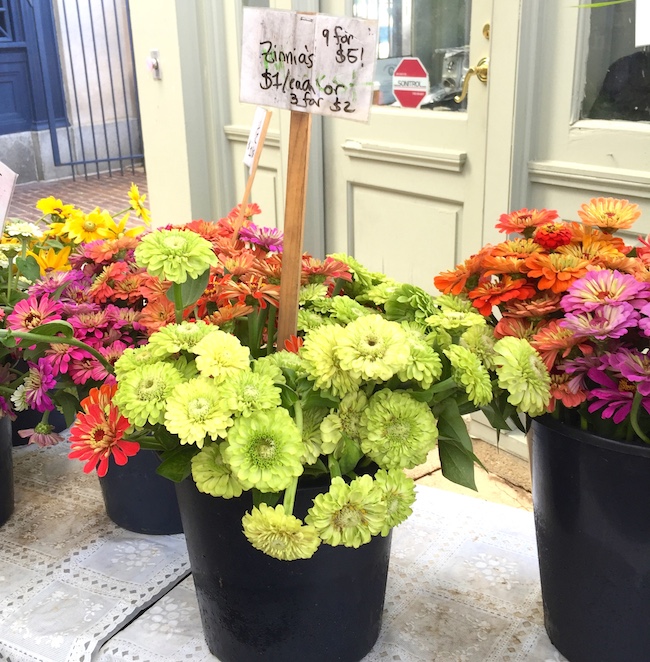Aren’t they tempting, those fresh-looking bouquets for sale at farmer’s markets? The bounty, the color, the variety! And there are always flowers you won’t find at your local florists, because they are seasonal and local, and so much more appealing because of their rarity. It’s impossible not to be happy with a bouquet of farm market flowers in your tote – until you get them home and they start to wilt before you can get them in a vase…

What happened to those perky blooms between farmstand and home? Here are some tips on what to look for when buying flowers, how to care for them after you get them home, and what varieties will last the longest (keeping in mind that growing seasons differ in different parts of the country, as do the types of flowers available).
What to look for in farmer’s market flowers:
Shopping earlier in the day is always better, so that the flowers haven’t been sitting in the hot sun for hours before you buy them. Ideally, flowers should be displayed out of the sun. If you’re buying flowers by the stem, look for those that have lots of buds to open over the next few days.
You can ask the farmer, in a friendly way, when the flowers were picked. Flowers picked the same day that they’re sold are optimal.
Have a look at the bottoms of the stems of the flowers. The cuttings should be firm and green, not soft or slimy – an indication of age.
Look at the petals and leaves of the flowers: do they look wilted, droopy, dried-out, or brown at the edges? Those are the ones to pass up.
How to take care of your flowers:
Now that you’ve made your selection, take your flowers home (do not leave them to sit in a hot car for hours while you do other things), and find a container.
Fill the container with room temperature water, and cut off a bit of the end of each flower stem. This creates a fresh pathway for water to find its way up the stalk of the blossom, and they’ll stay fresh longer.
Strip away any leaves that might be sitting in the water; they will cause bacteria to grow and foul the water, and the blooms will fade more quickly. For maximum freshness, change the water every day, to keep the bacteria count in your container low.
If you’re wondering about the little packets that florists give out with fresh flowers, they are usually just sugar, and I don’t believe it has much effect. Many people think an aspirin dropped into the water will help prolong the life of flowers, and I’ve always put a couple of pennies into a bouquet of tulips for the same reason. The only product that I can be certain will help is a drop of bleach, to lower the bacteria count in the container.
Long-lasting flowers:
Fresh sunflowers, daisies, lilies, coneflowers, and zinnias can last for up to a week. Black-eyed Susans can also last almost a week.
Dahlias are usually good for several days, as are the assorted flowers found in mixed bouquets, such as snapdragons, marigolds, ageratum, flowering mint, sweet William, or stock.
Roses, sweetpeas, lisianthus, and other more delicate flowers are unlikely to last more than a day or two.
Hydrangeas are a special case: they can wilt very quickly if left out of water, but if they’re allowed to dry out with the water evaporating naturally, they can hold their color and shape and make beautiful dried flowers.
Finally, look carefully at those gorgeous mixed bouquets of market flowers before you buy. Sometimes flowers with only a day left in them are mixed in with fresher flowers; you could be buying a bouquet that will be half-dead by evening.
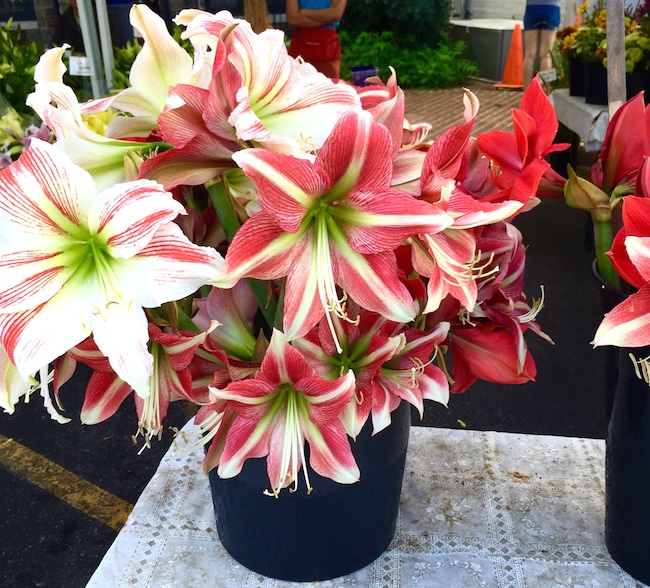
Amaryllis
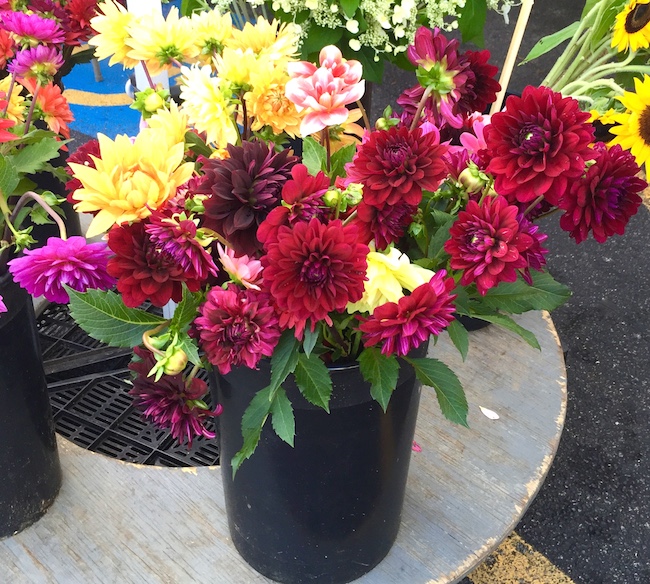
Dahlias

Sunflowers

Zinnias
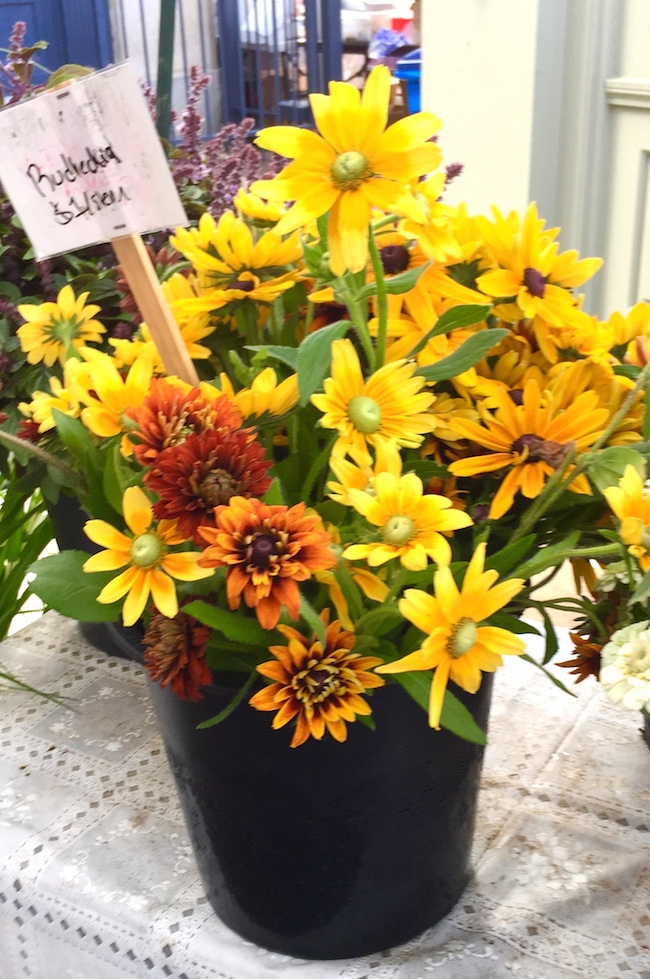
Rudbeckia

Lilies
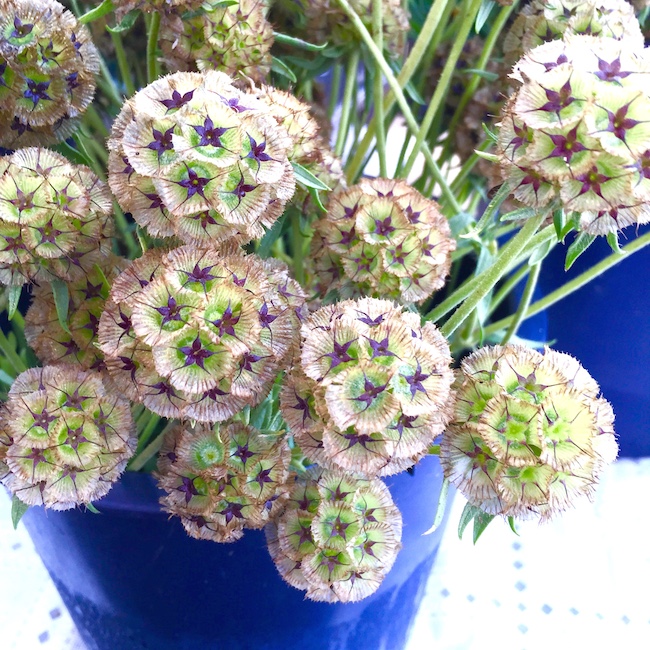
Scabiosa Columbaria

